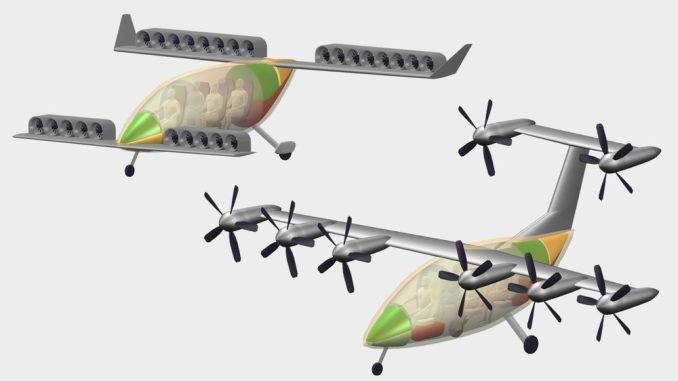
The future uptake of aircraft with distributed propulsion will, to some extent, depend on how their engine noise is perceived by people. Researchers at the Institute of Propulsion Technology in Germany (DLR) are investigating aerodynamic noise sources and their acoustic effects to enable low-noise engine designs and facilitate the integration of these aircraft into urban airspace.
In the DLR research project VIRLWINT (Virtual Acoustic Twin of Distributed Propulsion), the team is investigating acoustic effects to minimise tonal noise in fan stages with fewer stator than rotor blades. The study demonstrates that for low-speed fans engines, such as those used in urban air mobility (UAM), two key mechanisms can contribute to tonal noise reduction.
“Firstly, a tonal noise reduction occurs when the propagation angle of the excited acoustic modes is aligned with the stator leading edge angle,” a 10 April DLR press release states. “Secondly, for low-speed fan engines, specific rotor–stator blade count combinations exist, for which a cut-off condition can be achieved for the blade passing frequency tone despite the stator vane count being lower than the rotor blade count. This is called an inverse cut-off, which exclusively occurs for low-speed fans, as the effect depends on the rotor tip Mach number.”
In the VIRLWINT project, the researchers have demonstrated the application of both effects on two low-speed fan stages with fewer stator than rotor blades. Fan stages under representative UAM operating conditions are tested. The aim is to use the measured data to evaluate the noise levels of distributed propulsion systems and their psychoacoustic effects.
DLR explains that a UAM concept aircraft powered by 26 ducted fan engines is being developed within the VIRLWINT research project. “Each fan has a diameter of 46 cm and is represented by measurement data obtained from the test facility. Three fan designs are available for measurements on a test rig: a reference fan (baseline) and two new fan stages with fewer stator than rotor blades, referred to as low-broadband and low-tone designs.”
By implementing tonal noise reduction mechanisms, the team was able to create fan designs with diverse acoustic noise signatures. “The propulsion system equipped with the baseline fan emits tonal noise predominantly backwards relative to the direction of flight. In contrast, the low-broadband design has been deliberately engineered so that the tonal sound is primarily emitted forwards. For an observer on the ground, this means that in the first case, the tones are heard mainly after the aircraft has passed, whereas in the second case, they are heard before the aircraft arrives.”
To ensure comparability, DLR says these fan stages have been optimised to maintain nearly identical aerodynamic characteristics, including efficiency, pressure ratio, and resulting thrust.
“For the low-tone fan design, both tonal noise reduction mechanisms described above were combined in a single fan stage. As a result, tonal noise excitation was significantly reduced. In terms of noise perception, this leads to a more hissing and rushing sound instead of a tone-dominated sound.”
The effect and acceptance of these different noise characteristics on people on the ground will next be evaluated in future listening studies with test participants.
For more information

